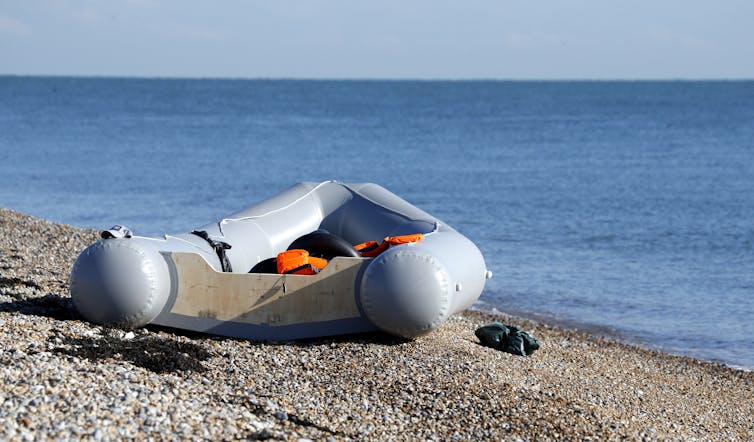Source: The Conversation – UK – By Colin Alexander, Senior Lecturer in Political Communications, Nottingham Trent University
The Nobel peace prize is rarely awarded to the most humble, modest or compassionate nominee. Instead, it all-too often ends up in the hands of high-profile figures who want it.
US president Donald Trump has said several times that he thinks he is deserving of it. And calls for him to win the award have only intensified since Israel and Hamas signed off on the first phase of Trump’s peace plan for Gaza.
The predicament is that, if the Nobel committee were to give the prize to Trump, they would be awarding it to a man whose administration has armed Israel’s continuing aggression in Gaza. This has led to devastating loss of life and, as confirmed by UN humanitarian chief Tom Fletcher, the area suffering famine.
Still, he has managed to engineer at least a ceasefire, which after two years of bitter conflict feels like a significant achievement.
But as a political communications analyst, I often worry that the Nobel peace prize committee has been too hasty to judge. I also worry that, while the institution might want to claim it is fully independent and works on the principle of group consensus, the reality is that its decision is often a political one.
Indeed, many previous recipients of the Nobel peace prize have, like Trump, not been the most peace-loving of people either.
High-profile controversies
In Nobel’s more than 120 years of awarding its prize, one of its most controversial decisions came in 1973. The award that year was given to Henry Kissinger, the then-US secretary of state. It is a decision that still divides opinion today.
Kissinger had been instrumental in the withdrawal of US troops from Vietnam in 1973. But he had also spent much of his political and academic career advocating for the proliferation of nuclear weapons and the development of a smaller “battlefield” range – Kissinger’s thesis that nuclear weapons could be used and were not just for deterrence.
He was a key decision-maker in the US’s “secret war” in Laos, which ran parallel to its operations in Vietnam, and in the US military’s invasion of Cambodia in 1970. More broadly, though, Kissinger’s political philosophy of realpolitik – politics based on practical objectives rather than ideals – appeared to have had little care for individual human life and saw global politics as a game between superpowers.
Kissinger was a man of great ego – the epitome of someone who wanted his own actions to be important and remembered.
Four decades later, the 2013 Nobel peace prize was awarded to the Organisation for the Prohibition of Chemical Weapons (OPCW). When the announcement was made, it seemed a fitting acknowledgement for an organisation that had been trying to do good in the world.
It felt like an apt award at a time when western political leaders and news media had roundly condemned the use of chemical weapons in Syria’s civil war. A gas attack in the Ghouta suburb of Damascus in August 2013 was widely condemned on the international stage.
However, the credibility of the OPCW has come under scrutiny since then. In 2019, British journalist Peter Hitchens published several articles about how the OPCW had suppressed the findings of its own staff to support its conclusion that the regime of Bashar al-Assad had used chemical weapons in an attack on the Syrian city of Douma.
Hitchens and others who sought to bring this to public attention, most notably a small group of academics called the Working Group on Syria, Propaganda and Media, were targeted by a smear campaign in which they were called “war crime deniers” and “apologists for Assad”.
But the Nobel committee’s most controversial decision has perhaps not been in who to award the prize to, but in who it did not award one to. From the 1920s until his assassination in 1948, Mohandas “Mahatma” Gandhi’s philosophy of non-violent civil disobedience against British colonial rule in India inspired many around the world. It led to his imprisonment on several occasions.
As I have detailed in my own work on the end of colonial rule in India, many British administrators privately acknowledged their deep admiration of Gandhi despite the extent to which his methods threatened their power. Gandhi is surely the individual most deserving of a peace prize who did not receive one.
![]()
Colin Alexander does not work for, consult, own shares in or receive funding from any company or organisation that would benefit from this article, and has disclosed no relevant affiliations beyond their academic appointment.
– ref. The Nobel peace prize has a record of being awarded to controversial nominees – https://theconversation.com/the-nobel-peace-prize-has-a-record-of-being-awarded-to-controversial-nominees-267152










